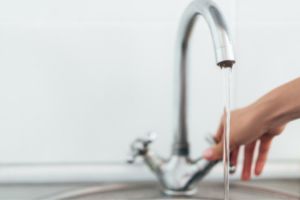If you have a water softener, learning exactly how it works can be useful—especially in the whole-home filtration. Armed with the knowledge of the water softening process, you can get a clearer idea of how each of the components operates and even learn how to repair your softener. Check out our short primer on the water softening process below.
What Is Water Softening?
Water softening involves removing the various minerals that comprise hard water, namely calcium and magnesium. Hard water can cause several issues. It’s not bad for your health, and you can drink and use it safely, but it has its drawbacks. For example, it can wreak havoc on your skin and leave streaks on your dishes. Your pipes can also begin to accumulate these minerals and become clogged, causing damage to your appliances.
Water softening takes care of all these things, but what’s does the process look like? We’ll illustrate how water softening works below.
Components of a Water Softener
Knowing the components of a water softener is integral to understanding the water softening process. Water softeners are made up of three different components: a resin tank, a brine tank, and a control valve. The resin tank is where the softening process happens. It contains a bed of resin with sodium ions. The brine tank holds the salt. It mixes the saltwater solution (brine) needed for regeneration purposes. The control valve sits on top of the resin tank and controls the various cycles, water direction, and water intensity.
The Softening Process
Hard water comes into your home through the main water supply line and enters the softener’s valve. It’s then directed into the resin tank and down the distribution line. During its journey, the hard water meets resin beads saturated with sodium and sometimes potassium ions. These beads remove the calcium and magnesium minerals through a process called ion exchange. After this, the newly softened water is distributed to your pipes for use.
Ion Exchange
This is how ion exchange works: the positively charged hard ions attach to the negatively charged resin beads. These beads act as magnets, attracting magnesium and calcium, which both carry strong positive charges. The sodium takes the place of the hard minerals, and the soft water is then distributed into your home.
In short, the water softening process may seem complex, but we hope this short primer has clarified it. Sometimes it helps to learn how something works!
How to Prepare Your Home for a Water Emergency


